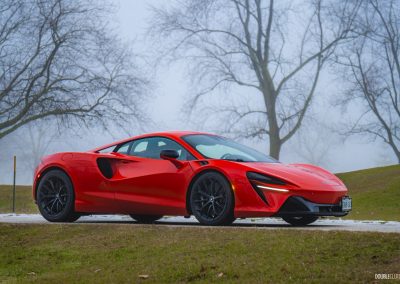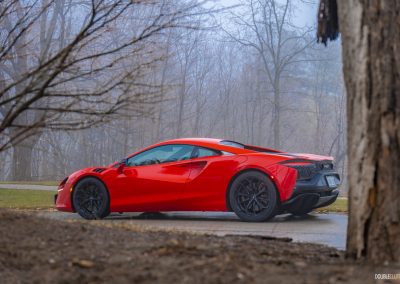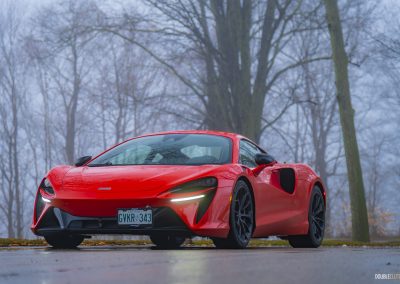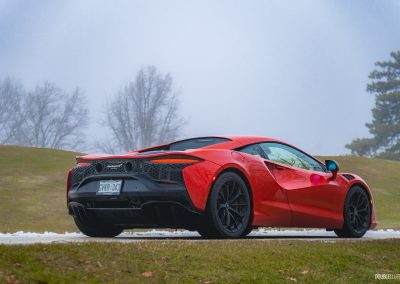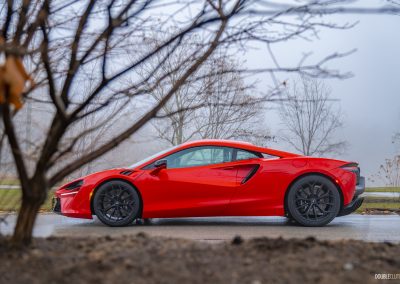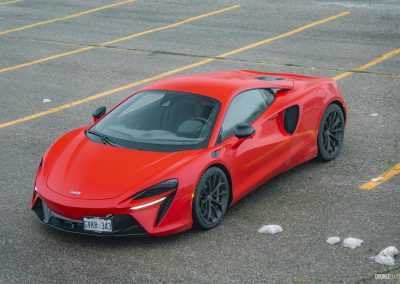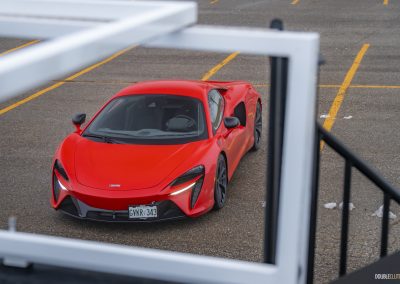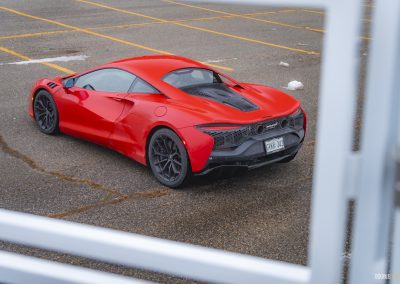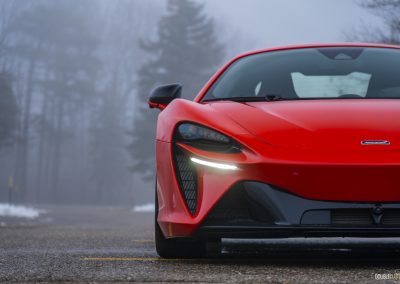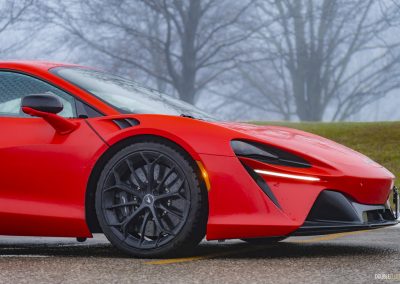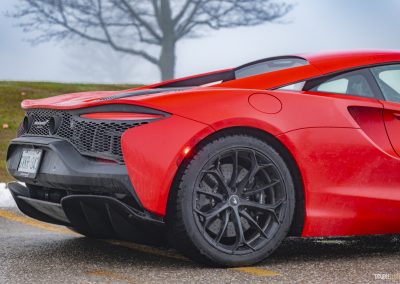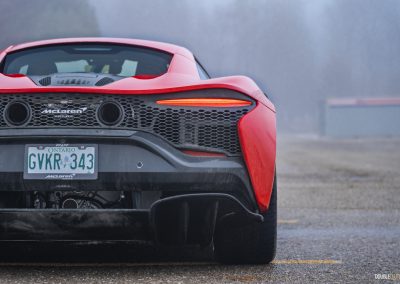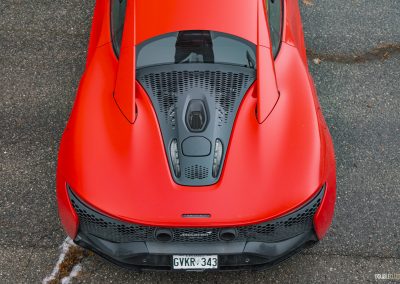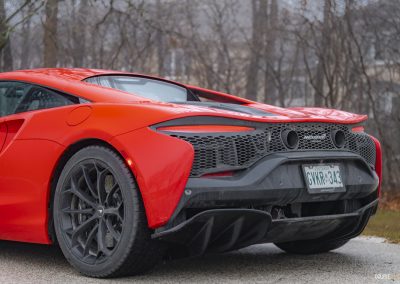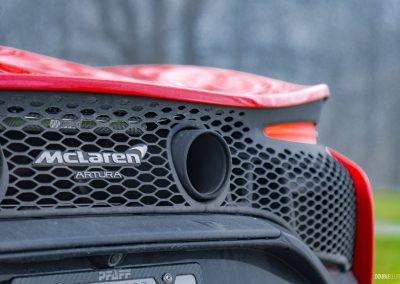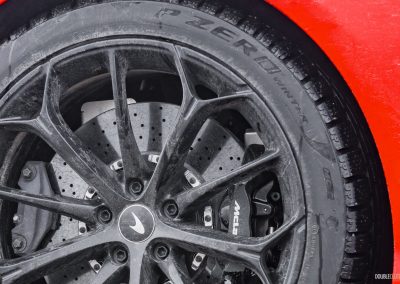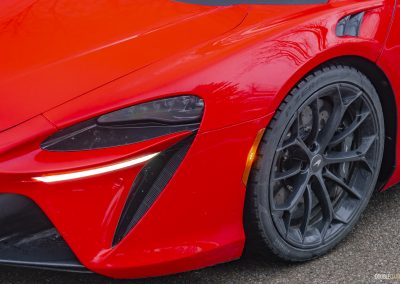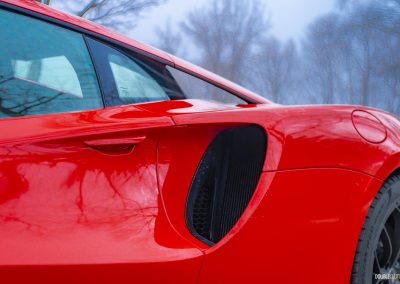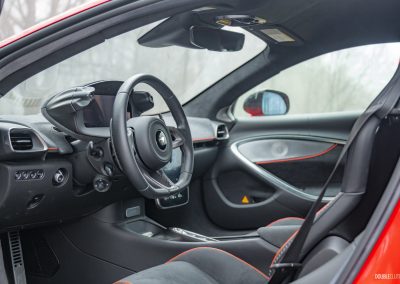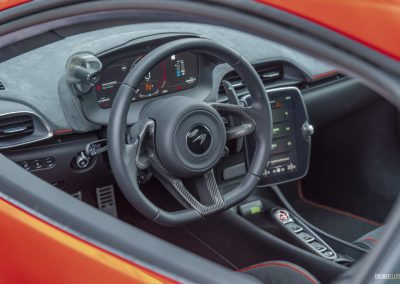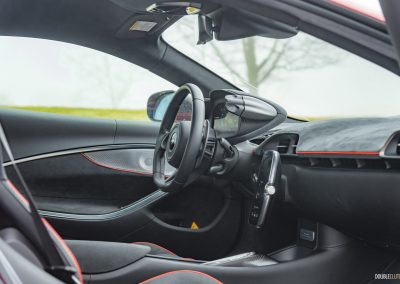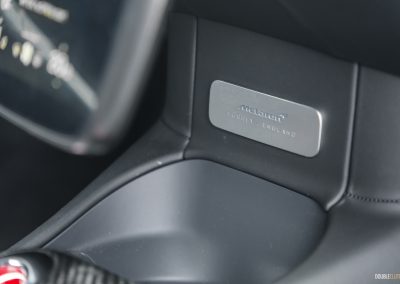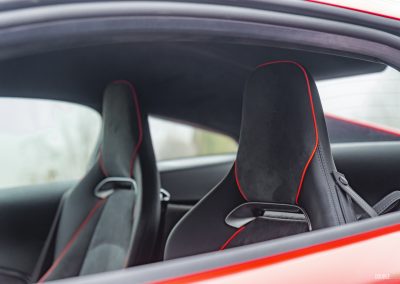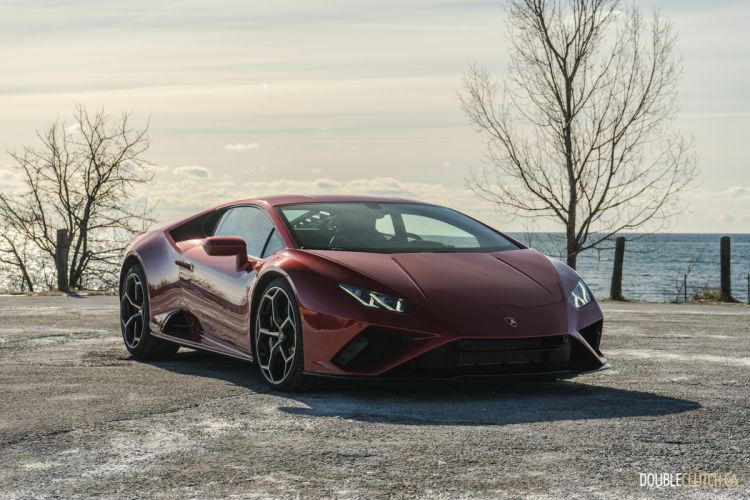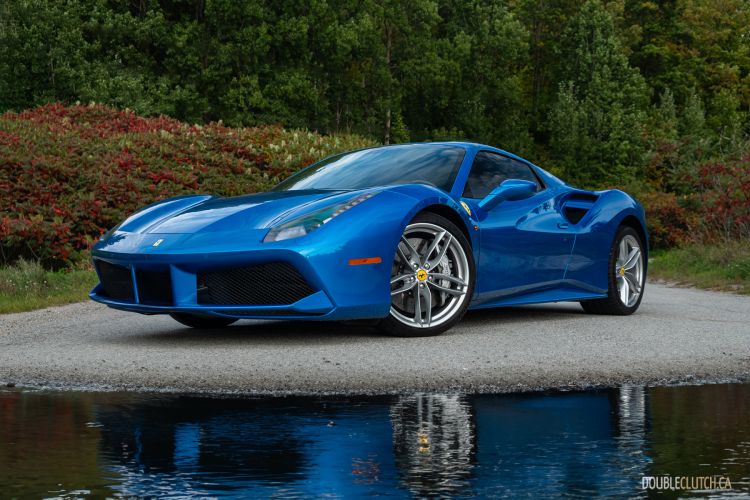It was a sopping January day when we contorted ourselves into a bright red 2024 McLaren Artura. It felt novel at first; the doors went up, the sills were wide, and the seats were firm. But it wasn’t long before it felt normal; this supercar had things like a proper infotainment with wireless Apple CarPlay, a digital gauge cluster, and proper rearward visibility.
Nathan, our deputy editor, was riding shotgun. He asked a simple question: “Does this feel special?”
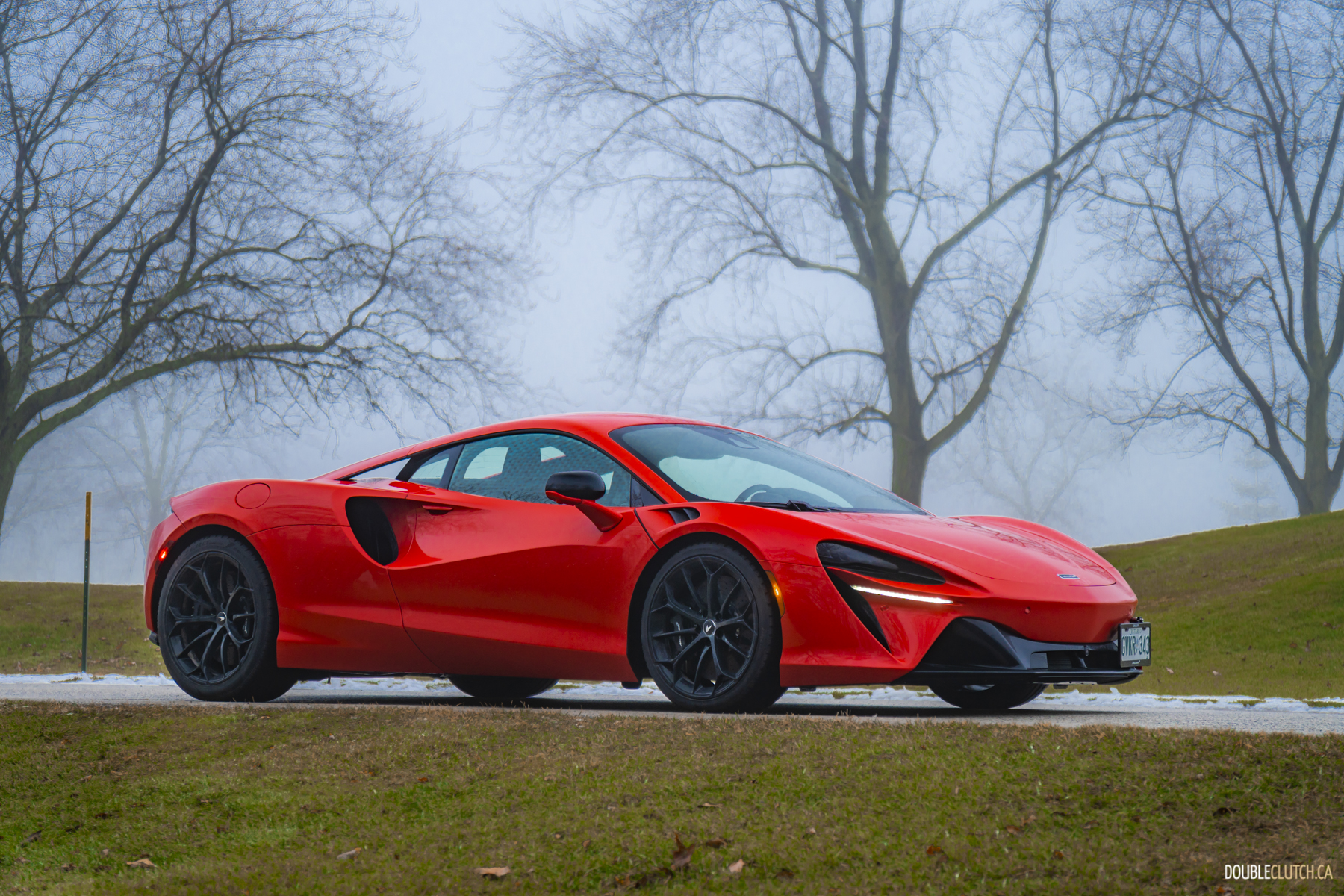
Much ado has been said about how most modern cars lack feel, even sports cars and supercars. Steering wheels used to make your hands buzz long after you’ve let go. Clutch pedals used to work your glutes, quads, and calves. And chances are by the end of your run, you’d probably climb out exhausted and drenched with sweat.
Today, there’s an effortlessness to even the most hard-edged supercars. It’s a lot easier to commute in a Huracan than a Diablo, but that sprinkling of extra comfort and usability almost always comes at the expense of feel. Oxymoronic as it may seem, how do you even apply such a human element to a big bucket full of nuts and bolts in the first place?
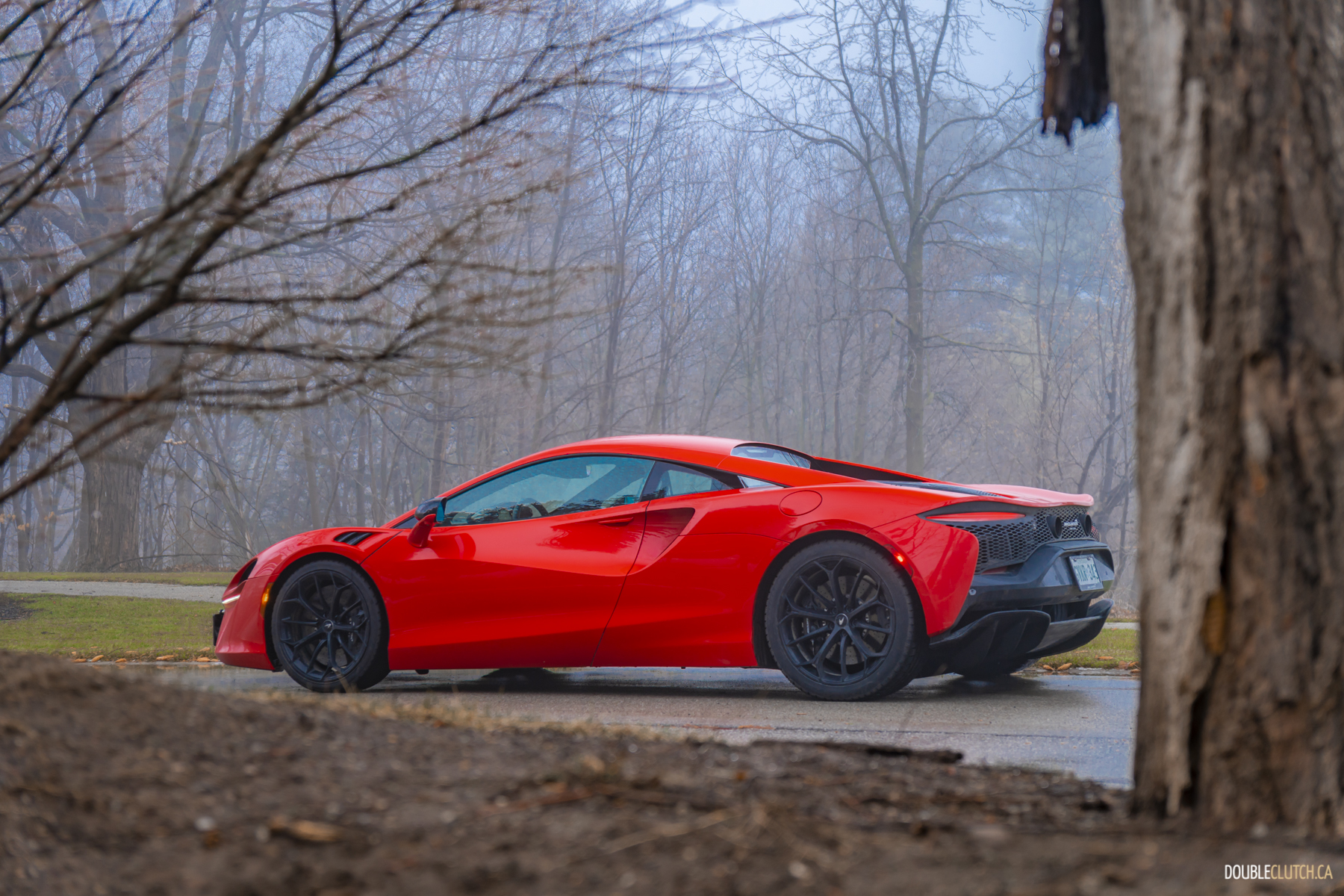
McLaren still knows. For all intents and purposes, its newest entry-level supercar is kind of a big deal. The Artura is the first new-from-the-ground-up McLaren in a long time, packing a whole host of advanced tech and ingenious engineering into an incredibly sexy body. It starts with a new carbon fibre tub weighing almost as much as me — 181 pounds. It’s now built by McLaren in-house, rather than outsourcing it to Mueba Carbo Tech in Austria — and most importantly, it’s designed specifically for a plug-in hybrid powertrain.
The gas part of the powertrain is made up of a new 3.0-litre twin-turbo V6 engine. Known as the M630, this new engine is a mix of common and unconventional. The turbos live in the valley of the cylinders — this is known as a “hot-vee”, a common layout among cars of this calibre — because it reduces turbo lag. Simple enough, right? What’s unconventional here is how wide that valley is; the cylinders in the M630 sit 120 degrees apart, compared to 60 degrees for most other V6s out there. This lets McLaren position the engine as low as possible without going to a Boxer layout. It sits so low, the engine entirely below the rear wheels. Now that’s a low centre-of-gravity. Eat your heart out, Subaru.
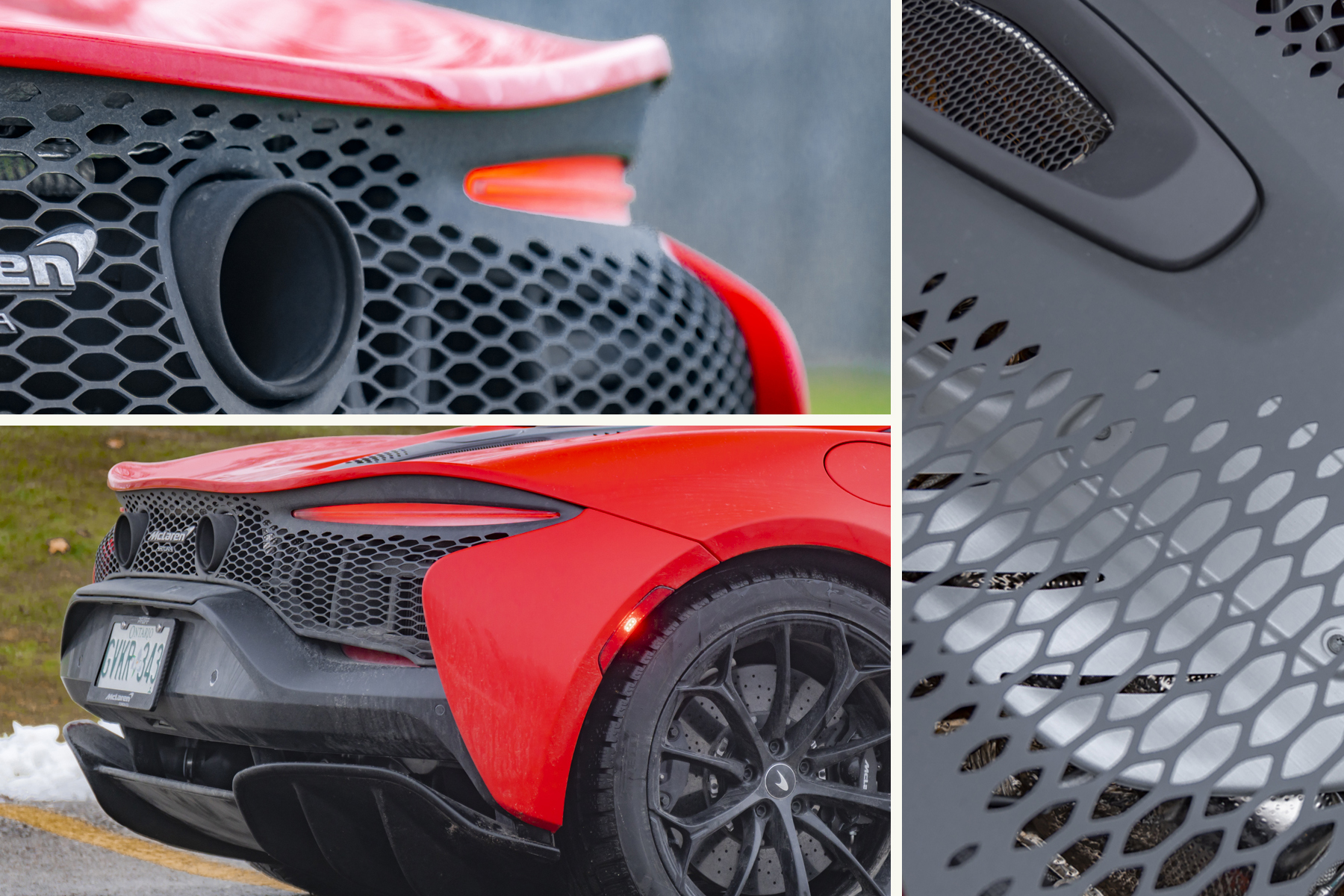
McLaren still uses a V8, but you’ll have to spring for at least a 750S to get the correct number of cylinders. Still, the twin-turbo V6’s numbers are there; on its own, it produces 577 horsepower and 431 pound-feet of torque, and revs all the way to 8,500 rpm. Oooh wee!
The electric end is made up of a 94-horsepower electric motor and a 7.4 kWh lithium-ion battery. All told, the plug-in hybrid powertrain pumps out a muscly 671 hp and 531 lb-ft of torque, sent to the rear wheels through an eight-speed dual-clutch automatic transmission. It’s a relatively compact footprint positioned behind your head, it does up to 31 kilometres in electric-only mode, and because it’s a PHEV, you get Green plates in Ontario. That means you can use the carpool lanes by yourself. In a McLaren. I’ve never felt like more of a massive jerk in my life.
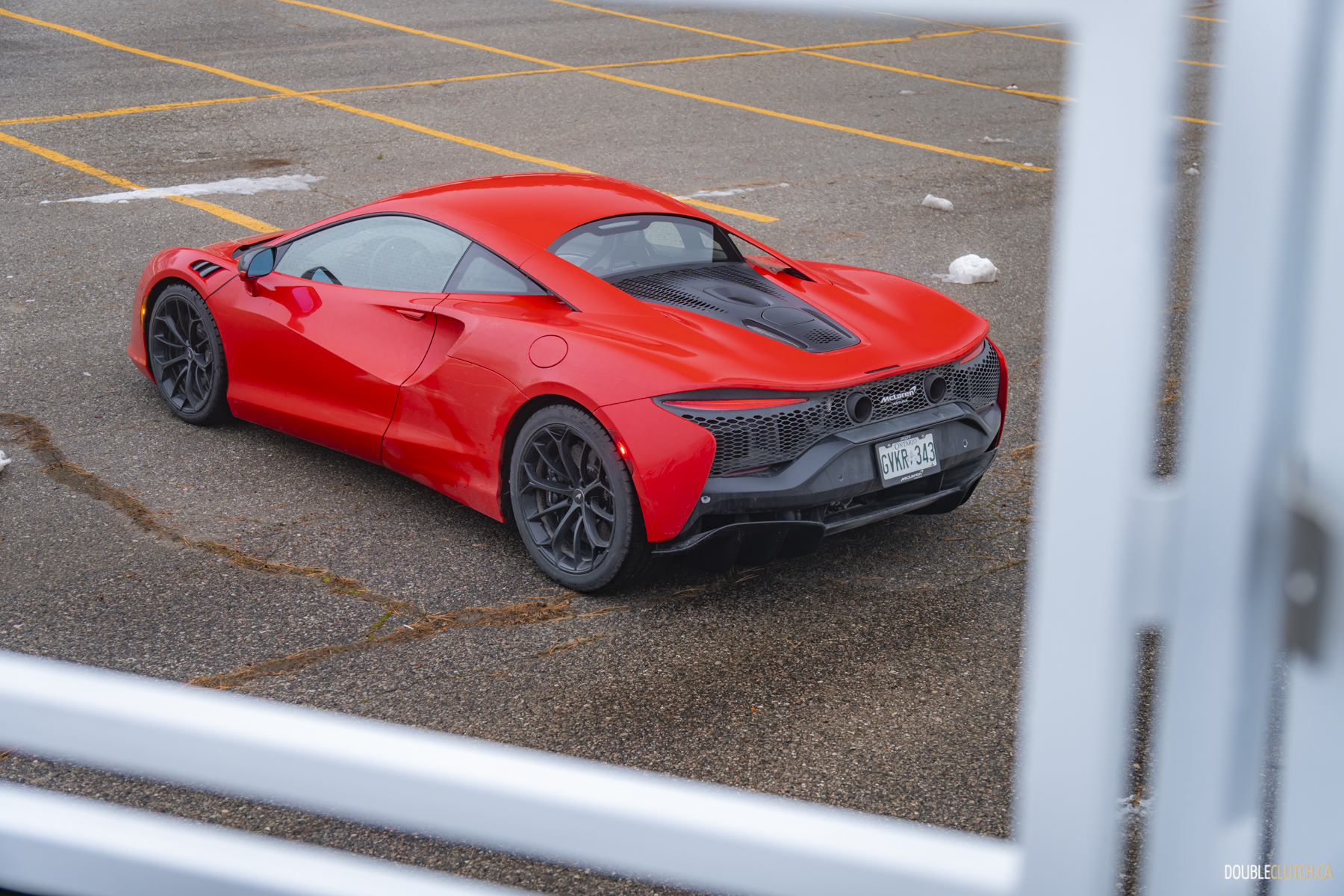
There are two sides to the McLaren Artura coin. On one side, it ticks all the boxes a modern supercar should. It’s unwaveringly fast; strictly gas-powered Maccas exhibit a tiny bit of turbo lag baked in when you blast off the line, but the hybridized Artura uses the electric beans to fill in while the turbos spool up. The end result is a sort of pull that takes hold early, takes hold hard, and doesn’t let off until the upper reaches of the rev range. The transmission fires off the occasionally clunky shift, but it’s otherwise snappy when you drop the hammer. According to McLaren, the Artura sprints from rest to 100 km/h in three seconds flat and will keep charging ahead to 330 km/h; I didn’t personally verify these figures, but I’ll take McLaren’s word for it. The Artura is flippin’ fast.
And the Artura ticks the modern supercar’s boxes of usability. You could, fairly comfortably, drive this thing year-round. Our fling with the Artura took place in the grey grossness of winter, and it made dreary drives fun. The doors went up, the seats look and feel great, it turns on in electric mode so you don’t piss off your neighbours, plus it has automatic climate control, a pretty good sound system, and CarPlay.
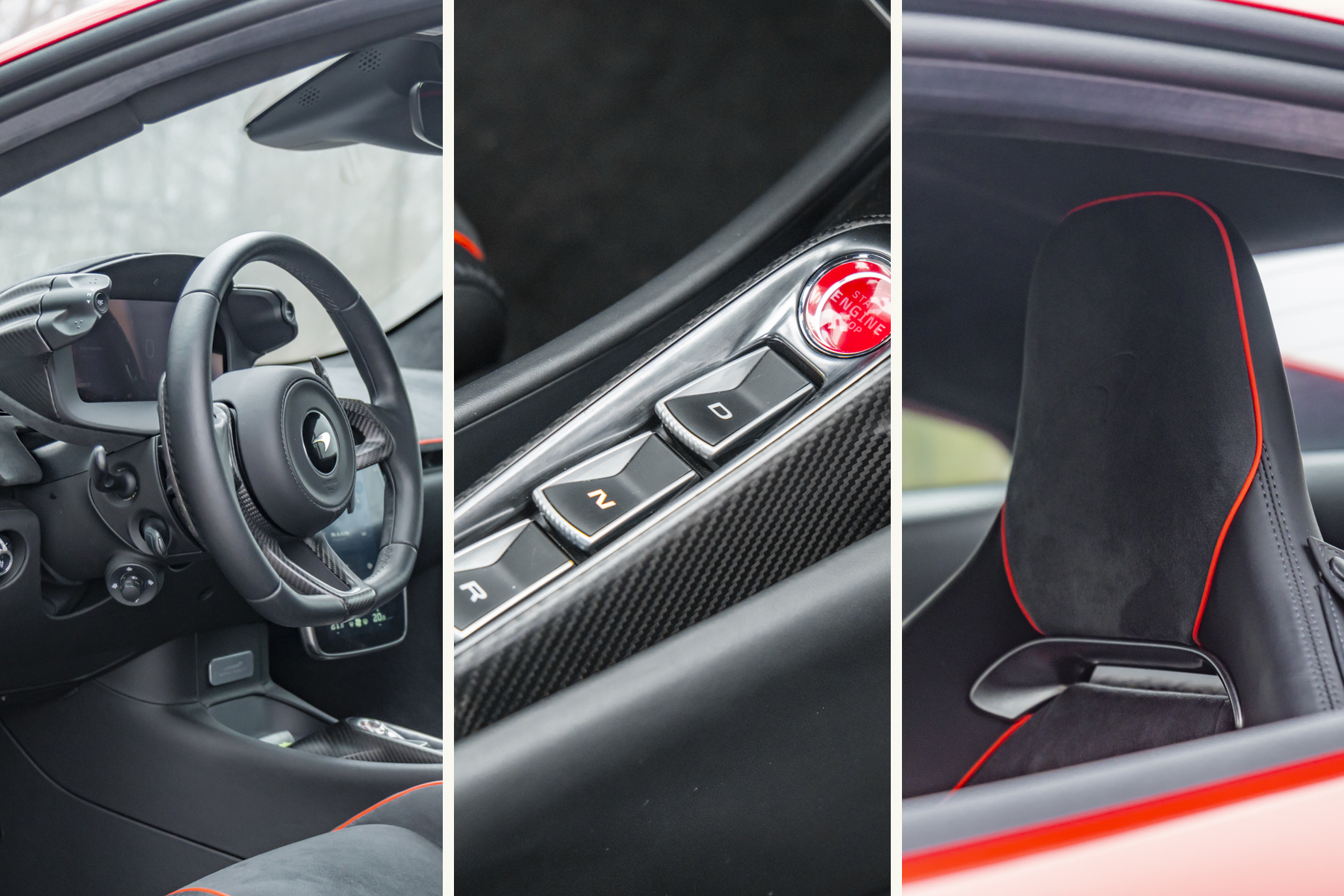
But what’s most surprising about the Artura is how it still embodies what McLaren is known for. Weight is the well-documented enemy of electrification, but the Artura tips the scales at just over 3,300 pounds. McLaren did a great job hiding the electric end’s heft, but more than that, you still feel things in this car. The steering sings with the road and is perfectly weighted. The induction and turbo noises coming from directly behind your head tickle your ears — and seeing the heat coming off the back in the rear-view mirror is super neat. Even the electric motors aren’t underscored by a space-age soundtrack to fill in the awkward silence. If you’ve been having a tough time lately, hop into an Artura and go for a drive. You’ll be feeling things in no time.
So yes, Nathan, it does feel special. The Artura does the modern supercar thing; there’s no shortage of clever engineering and blistering performance baked in, plus you could get away with driving it year-round, though we all know most of them will live in a climate-controlled garage and see the sun a handful of times a year. Which is too bad, because despite all this modernity, livability, performance, and engineering, the 2024 McLaren Artura still offers the sort of feel and feedback that is a lost art these days. It’s been a long time since I’ve felt steering this good.
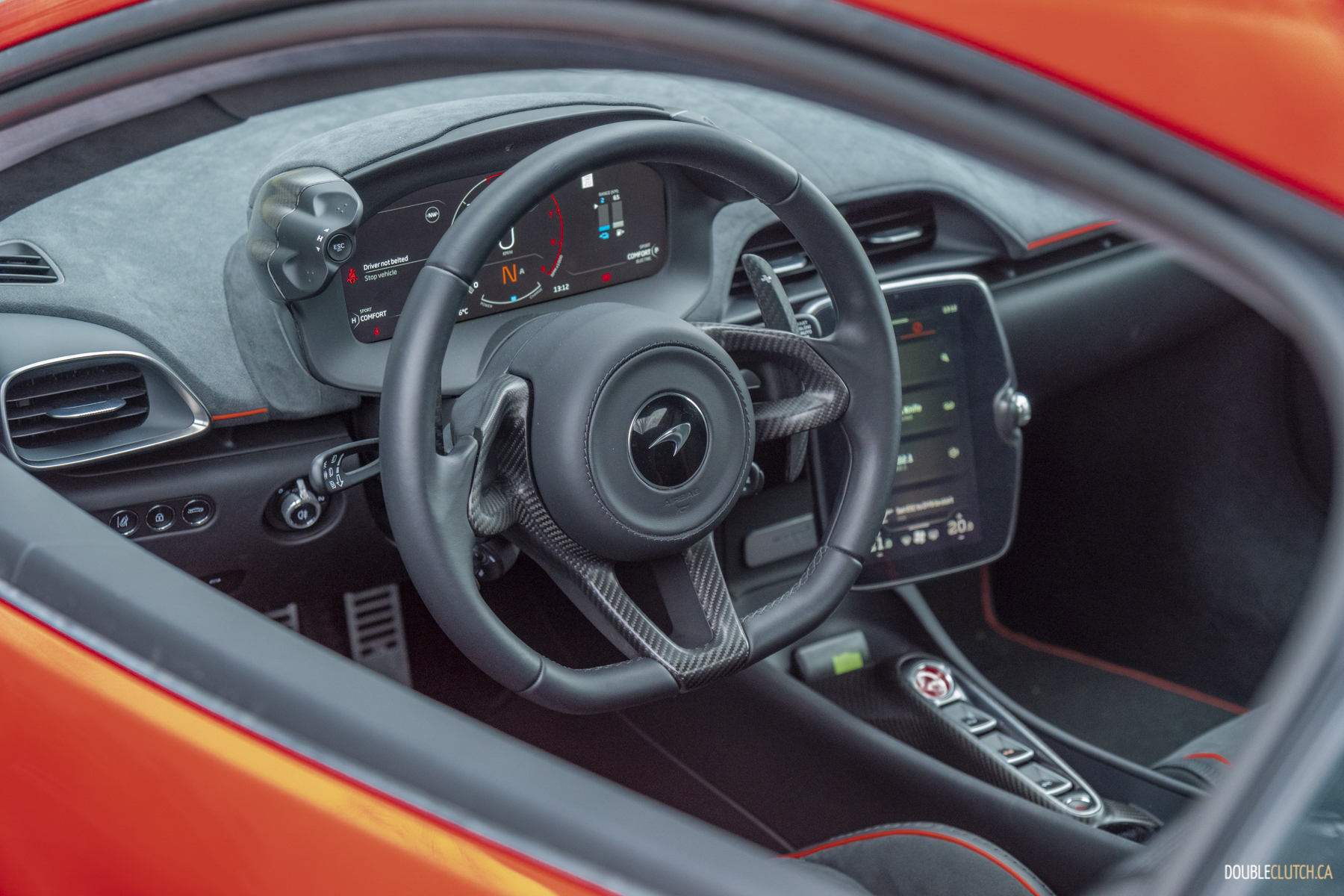
Take Two: There’s more to the Artura than the flex
I came into this ready to be unimpressed, almost eager to turn my nose up at the Artura, one of the newest entries in the realm of here-and-now cool-kid flex-mobiles. This is the sort of car I haven’t paid attention to in years because it’s not tangible to my version of reality, and it hits nearly all the marks that has me so thoroughly turned off of modern supercars. It’s automatic, like all the other cool kids are. It has a small, heavily boosted V6, like all the other cool kids have been forced into complying with. It has a plug-in battery and electric motor so it can have an oxymoronic Green Vehicle plate, like all the other cool kids.
Oh, and the doors go up, because of course they do.
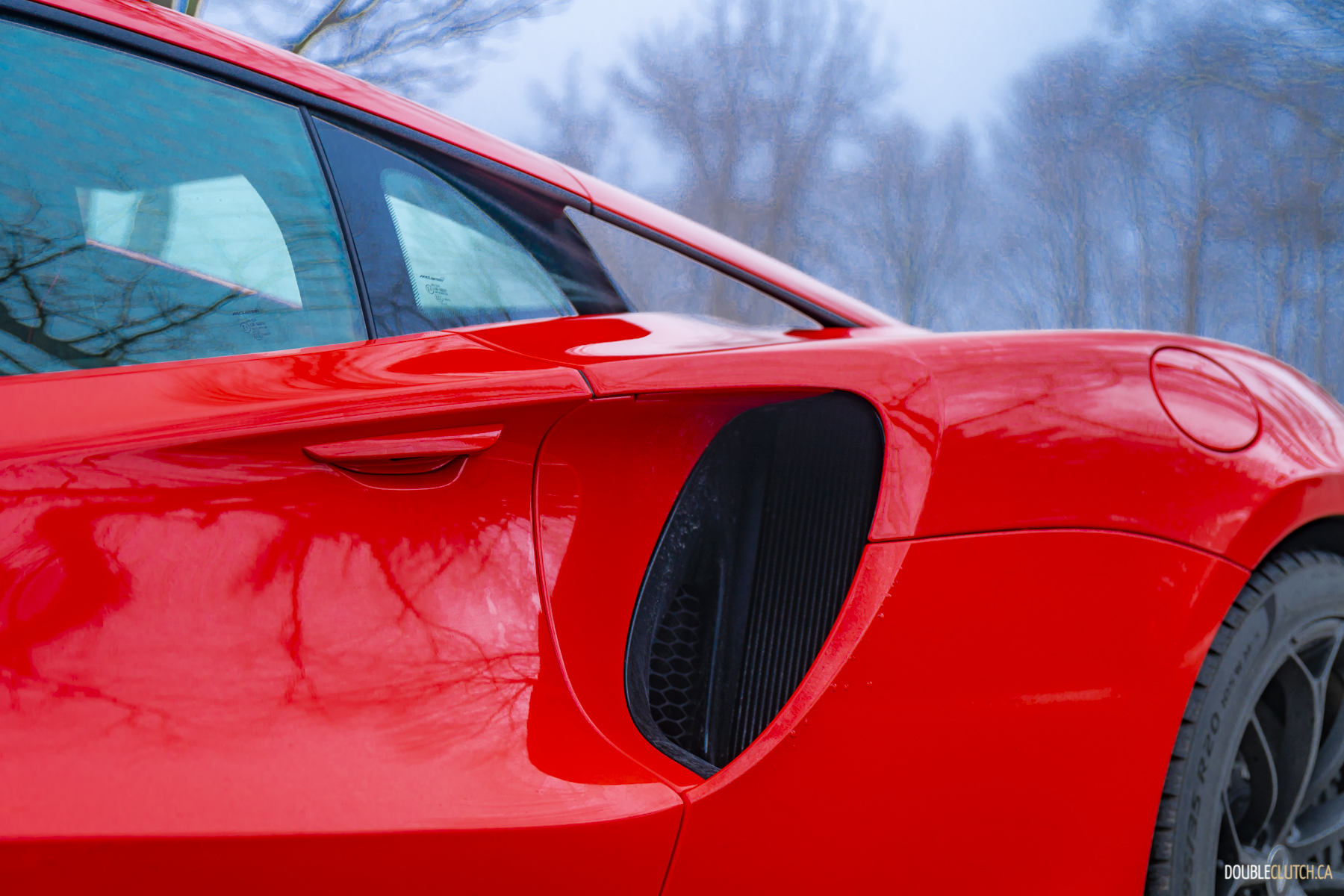
I wasn’t impressed when we first met. I was so resistant to the very idea of this thing that, as Nick mentioned — sitting in its carbon fibre tub, looking through its race-car canopy, with its angry engine churning away behind my ear — that I wasn’t sure it felt special. I sorta-not-really-jokingly mused that a BMW M3 CS feels very nearly as theatrical at half the cost, while also bearing the burden of being a sedan. But the newest Lil’ Mac slowly began revealing itself.
It’s loud; surprisingly so. The new engine, which I later learned is a tiny, cleverly packaged little bastion of fury that was designed and built entirely in house, doesn’t make any bones about being anything other than fast. It’s a refreshingly authentic unit, with no active valves to quiet it down, and no overly gratuitous snap-crackle-pops to make it feel more interesting than it actually is. It’s only ever quiet when it’s off and the car is rolling on electric power, and even then, there’s no artificial augmentation, just some motor noise and gear whine. What a novel idea.
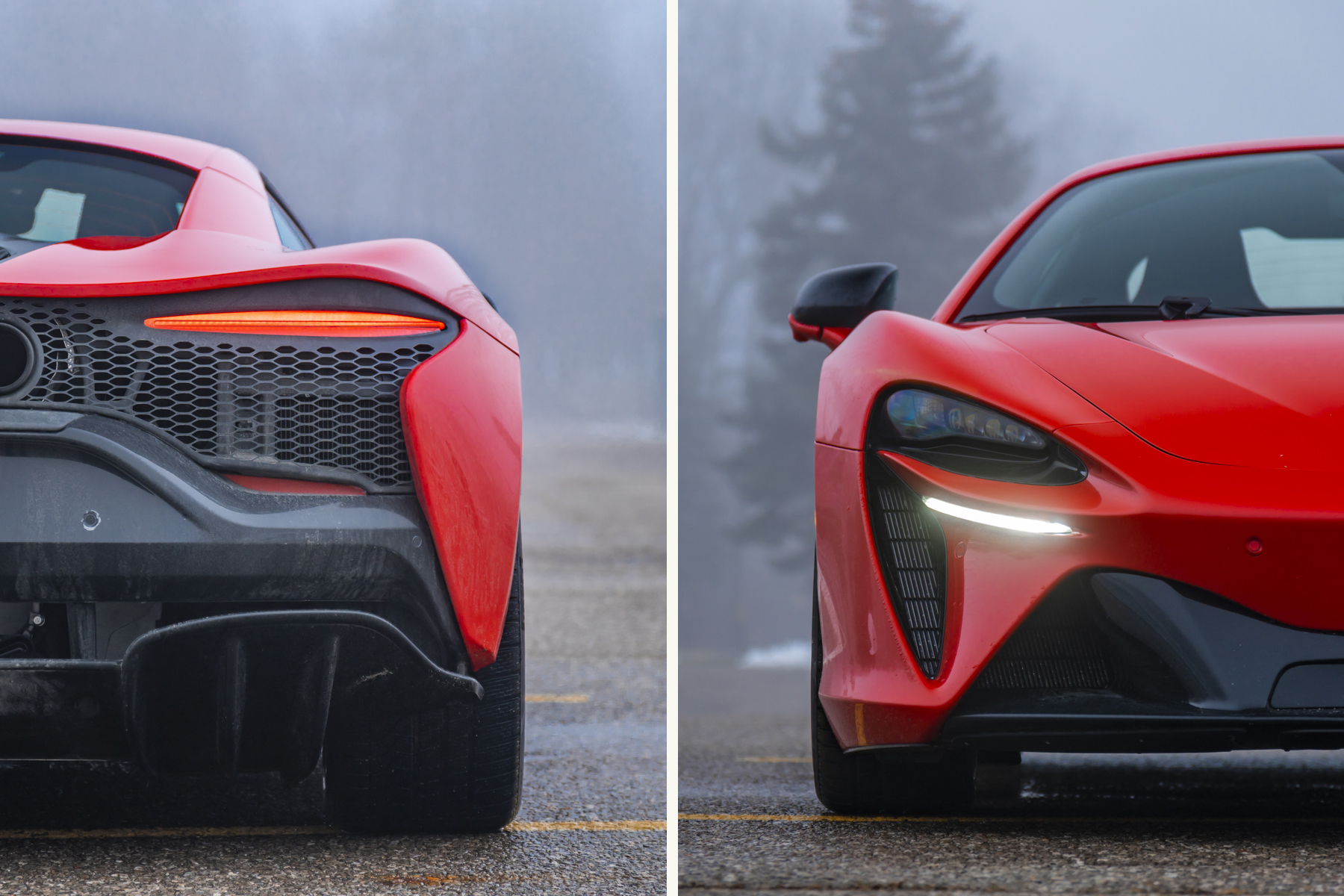
The Artura eschews the trick active sway bars employed by Maccas past, so if your passenger thinks they’ll be able to touch up their makeup on the way to wherever you’re going to flex, think again. You’d better be limber, too, or you’ll make a fool of yourself climbing over the wide sill of the ultra featherweight carbon fibre spine of the Artura.
Said carbon fibre is, possibly in an industry first, mostly hidden, going directly against the grain of the flex crowd. There’s a little bit of on the centre console, the steering wheel, and … that’s it. Even the front and rear aero bits, mirror caps, headlight housings, fender vents, and everything else you’d expect to be flaunting the glossy look-how-race-car-I-am stuff, are just plain gloss black. While you’re looking for some exposed carbon to show your well-heeled homies, you might notice the Artura’s incredibly elaborate, sinuous shaped body panels. This is exemplified most by the rear clamshell, a massive single piece of curated curvature that was only able to be brought to life by utilizing a new technique of blow-molding aluminum like sexy tupperware.
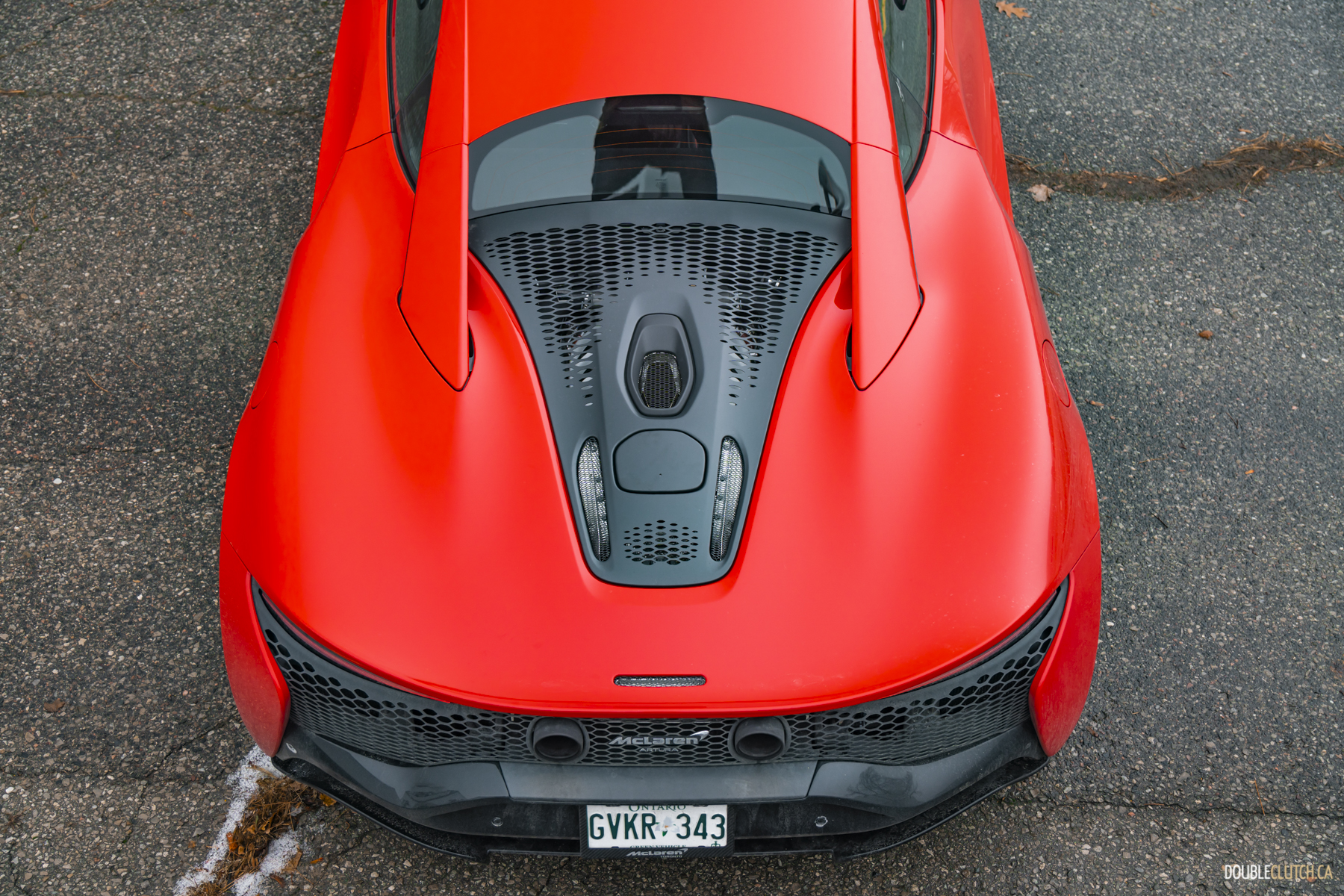
There’s so much engineering prowess to nerd out over that’s not immediately apparent, but instead expresses itself over time. There’s something new to notice everywhere you look, and thoughtful touches absolutely everywhere. Nothing in this car was an accident, except maybe for the fact that it works at all, as it had an incredibly troubled development and nearly bankrupted the company.
There’s so much modernity in here, but McLaren’s gone to nearly suicidal lengths to make sure that for all the frills that I might roll my eyes at on a spec sheet, it feels legitimate. First and foremost, it behaves like a proper driver’s car, with pampering and posing coming a distant second. McLaren pitches it as a supercar you could use every day, and you could, but if you’ve grown accustomed to what other modern supercars offer in terms of refinement, the 2024 McLaren Artura will be a revelation. Whether that’s a good or bad thing depends on you. —Nathan Leipsig

